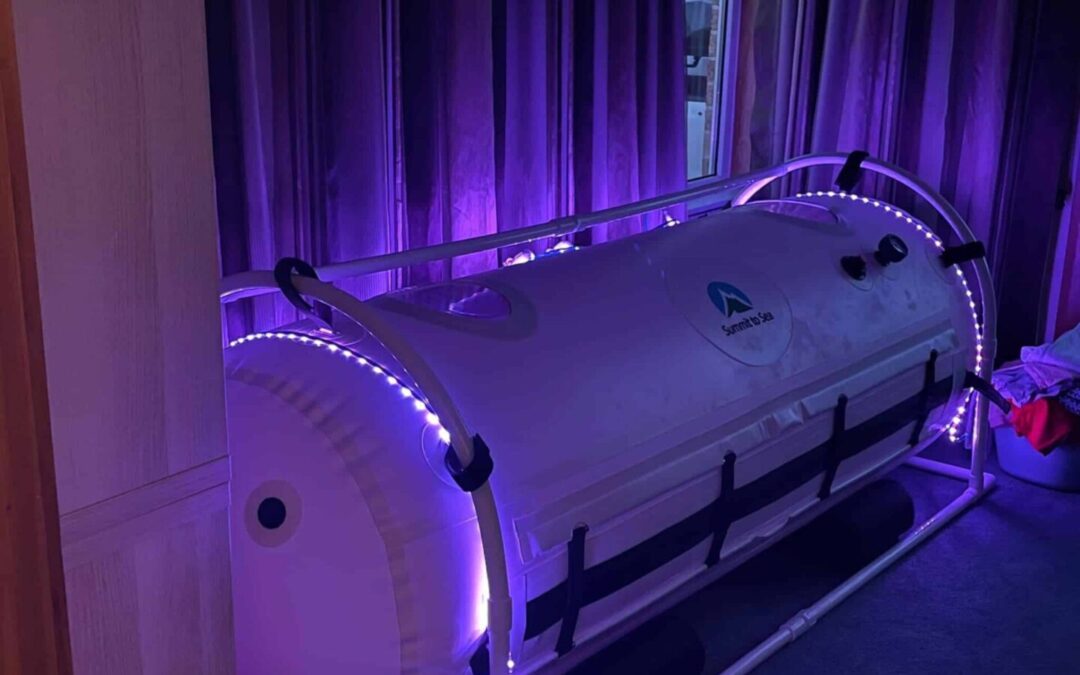Hyperbaric oxygen therapy (HBOT) has emerged as a beacon of hope. But did you know that even the air we breathe under hyperbaric conditions can yield remarkable benefits? Let’s embark on a journey to understand how the power of pressurized air is transforming the landscape of medical treatments.
The Oxygen Revolution: Elevating Tissue Oxygenation
Breathing regular air under hyperbaric oxygen conditions of 1.3 atmospheres (Atm) leads to an astonishing elevation in tissue oxygenation, surpassing the 50% mark. This surge in oxygen levels within our body can trigger profound physiological effects, a fact substantiated by numerous case reports (2,3,4,5). Even a subtle increase in partial pressure, such as experiencing 1.05 Atm at an altitude 402 meters below sea level (as found at the Dead Sea), can induce noticeable physiological changes (6-10). The implications are clear: treatment with room air at 1.3 Atm is far from an “ineffectual treatment.”
The Transformative Potential of Mild Hyperbaric Oxygen
A recent randomized controlled trial conducted by Wolf et al. (11) sheds light on the remarkable benefits of mild hyperbaric oxygen therapy (mild HBOT) for mild traumatic brain injury (mTBI) patients. In this study, room air at 1.3 Atm served as a sham control, while the treatment group received 100% oxygen at 2.4 Atm. Astonishingly, both groups exhibited significant improvements in cognitive symptoms and measures of post-traumatic stress disorder (PTSD).
1.3 atm at room temperature is just as effective as 100% oxygen at 2.4 atm
Unlocking the Affordable and Accessible Option
The implications of these findings are monumental. They underscore that the less expensive and logistically simpler treatment of mTBI patients with mild HBNO2 (mild hyperbaric pressure of 1.3 Atm using regular air) can lead to meaningful improvements. Previous studies had already hinted at the effectiveness of mild HBNO2 conditions as treatments.
A Milestone in Neuroplasticity
For the first time, this groundbreaking study demonstrates that HBOT can induce neuroplasticity and significant improvements in brain function for mTBI patients grappling with prolonged Post-Concussion Syndrome, even years after the initial injury. The potential applications extend beyond mTBI, encompassing the easing of PTSD symptoms and the repair of radiation damage. Furthermore, it’s reasonable to anticipate that HBOT may help slow down or even reverse metabolic disorders associated with neurodegenerative diseases .
Balancing the Equation: Finding the Right Pressure
While breathing 100% oxygen at 2.4 atmospheres generates exceptionally high tissue oxygen levels, this can sometimes lead to inhibitory effects or focal toxicity. This raises intriguing questions about whether HBOT at 2.4 ATA may be less effective than treatments at 1.3 ATA or other lower pressure levels.
In essence, the journey of hyperbaric oxygen therapy is one filled with immense promise. It’s not just about the oxygen we breathe, but the power it holds to transform lives and unlock new avenues for healing and well-being.
Source
MacArthur, A. (202, May 18). Hyperbaric oxygen therapy at 1.3 atm at room temperature is just as effective as 100% oxygen at 2.4 Atm as evidenced by research. Portland Chiropractic Neurology. https://portchiro.com/blog/article/2020/5/18/hyperbaric-oxygen-therapy-1-3-atm-room-temperature-just-effective-100-oxygen-2-4-atm-evidenced-research

